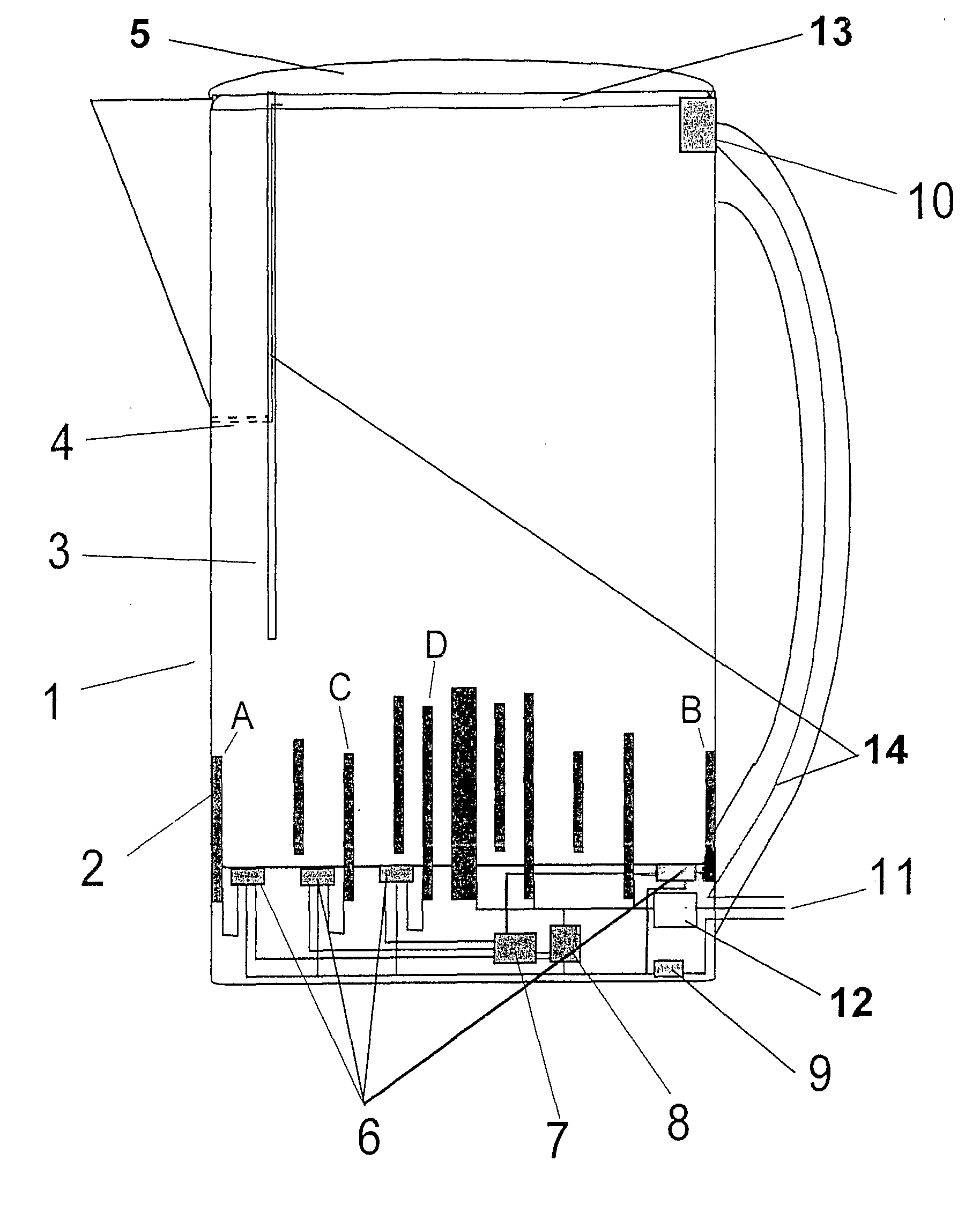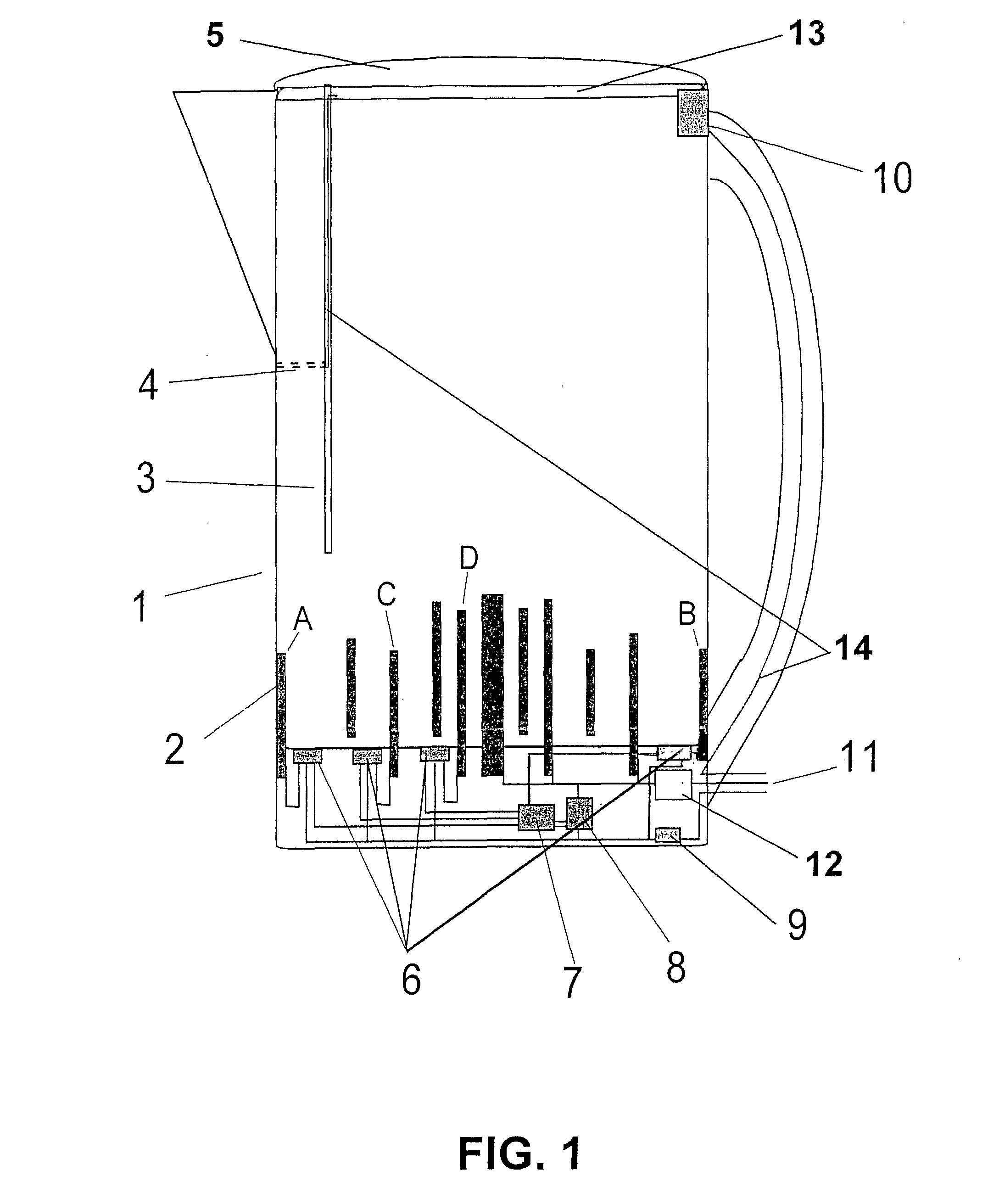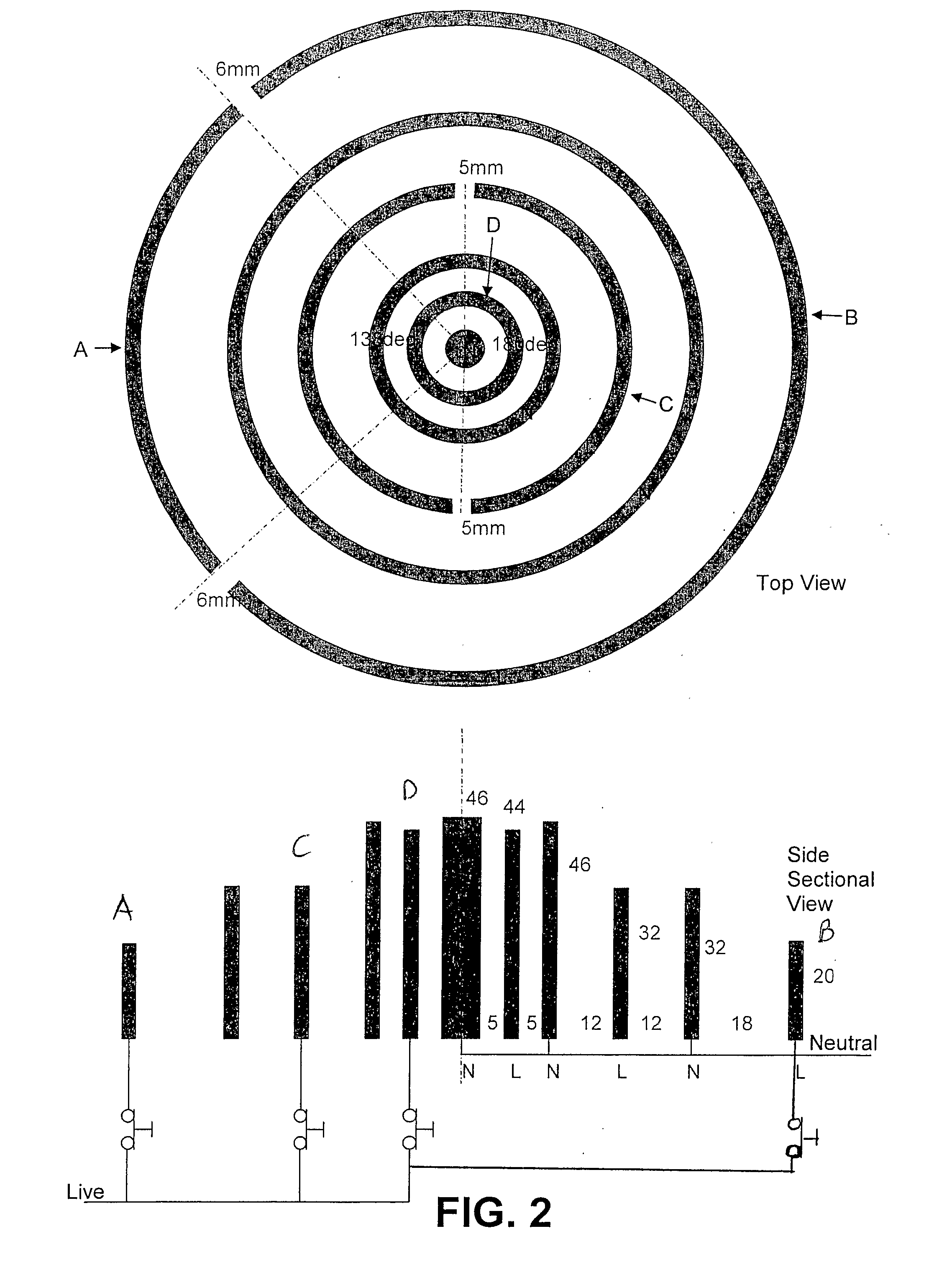Liquid heating apparatus and method
a technology of heating apparatus and liquid, which is applied in the field of liquid heating apparatus and method, can solve the problems of increasing the temperature gradient between the elements, causing many small bubbles of steam, and causing high temperature gradient, and achieves the effect of less noise and faster heating of water
- Summary
- Abstract
- Description
- Claims
- Application Information
AI Technical Summary
Benefits of technology
Problems solved by technology
Method used
Image
Examples
Embodiment Construction
[0067] Referring now to FIG. 1, there is shown a preferred embodiment of the present invention, in which the electrodes 2 are arranged across the bottom of a vessel 1 for containing a fluid to be heated in the form of concentric rings formed from substantially vertical plates and with the neutral and live electrodes being arranged alternately.
[0068] The kettle 1 is designed to be connected to a standard single phase AC electrical mains supply 11, as is commonly found in the home or office. Such AC electrical supplies 11 generally consist of at least a live and neutral line, with some countries, for example the UK, also providing an earth line for safety. In the preferred embodiment described below, the example of a UK standard AC supply is used.
[0069] The kettle 1 of the present invention is designed, during normal operation, to operate at the limit of the domestic AC electrical supply 11 being used to power the kettle 1. For example, in the UK, these limits are 230 Volts and 13 A...
PUM
 Login to View More
Login to View More Abstract
Description
Claims
Application Information
 Login to View More
Login to View More - R&D
- Intellectual Property
- Life Sciences
- Materials
- Tech Scout
- Unparalleled Data Quality
- Higher Quality Content
- 60% Fewer Hallucinations
Browse by: Latest US Patents, China's latest patents, Technical Efficacy Thesaurus, Application Domain, Technology Topic, Popular Technical Reports.
© 2025 PatSnap. All rights reserved.Legal|Privacy policy|Modern Slavery Act Transparency Statement|Sitemap|About US| Contact US: help@patsnap.com



